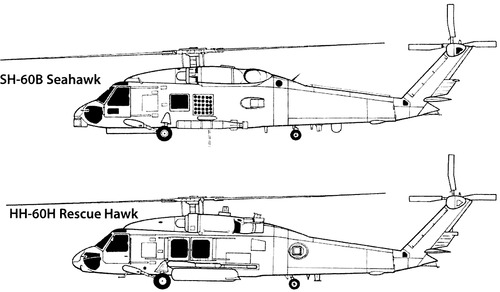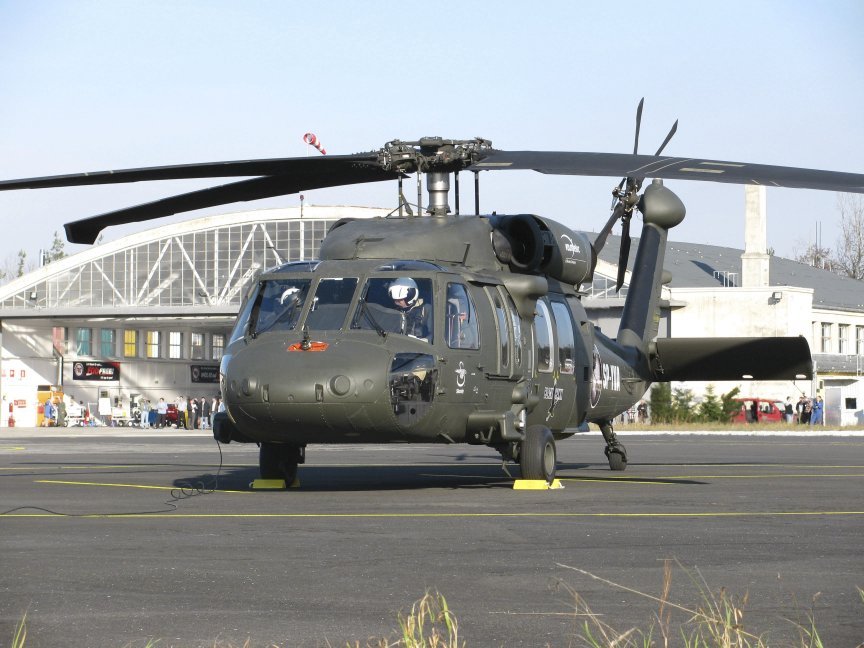Sikorsky S 70: Enhancing Helicopter Effectiveness and Convenience
Sikorsky S 70: Enhancing Helicopter Effectiveness and Convenience
Blog Article
High-Performance Multi-Role Rotorcraft Featuring Advanced Cabin Technologies and Integrated Sensing Unit Systems
The realm of rotorcraft innovation has actually seen remarkable improvements in recent times, specifically in the realm of high-performance multi-role rotorcraft furnished with advanced cabin innovations and flawlessly incorporated sensor systems. These developments have not only boosted the operational abilities of rotorcraft yet have likewise considerably influenced contemporary air travel operations on different fronts. From boosted goal adaptability to enhanced functional effectiveness, the convergence of advanced cabin innovations and incorporated sensor systems has actually introduced a brand-new era of opportunities for rotorcraft applications. In the adhering to discussion, we will discover the advancement of rotorcraft modern technology, explore the world of sophisticated cockpit innovations, and check out the ramifications of integrated sensing unit systems on the operational convenience and effectiveness of modern rotorcraft.
Advancement of Rotorcraft Technology
The advancement of rotorcraft technology has actually been marked by significant advancements in the rules of aerodynamics, materials, and propulsion systems, shaping the capacities and performance of modern rotorcraft. Wind resistant improvements have actually improved the performance and ability to move of rotorcraft, permitting increased speed, dexterity, and stability during flight (sikorsky s 70). Advancements in products, such as the usage of composite materials and advanced alloys, have led to lighter yet more powerful rotorcraft frameworks, boosting total performance and resilience. Additionally, improvements in propulsion systems, consisting of a lot more effective engines and innovative propulsion technologies, have actually made it possible for rotorcraft to attain greater elevations, faster rates, and better hauls.
These innovations have not only changed the abilities of rotorcraft yet have actually also broadened their applications throughout numerous sectors, including military, industrial, and emergency situation services. The constant advancement of rotorcraft modern technology remains to drive advancement in the area, pushing the borders of what is possible and shaping the future of vertical trip.
Advanced Cockpit Innovations
Structure upon the foundational improvements in the rules of aerodynamics, products, and propulsion systems, the realm of rotorcraft innovation now changes focus in the direction of introducing Advanced Cockpit Innovations. The assimilation of advanced modern technologies within the cabin environment plays a critical function in enhancing the functional abilities, security, and performance of contemporary rotorcraft. sikorsky s 70. Advanced Cockpit Innovations encompass a wide range of attributes made to offer pilots with improved situational awareness, structured information administration, and user-friendly control interfaces
Among the vital improvements in cabin design is the execution of glass cabins, which change standard analog evaluates with high-resolution screens. These electronic systems offer adjustable formats, real-time data assimilation, and boosted readability, making it possible for pilots to accessibility critical information at a glimpse. Advanced avionics systems, such as fly-by-wire controls and augmented fact display screens, are changing how pilots engage with the aircraft, enabling for exact control and boosted decision-making capacities.


Integrating advanced cabin innovations not only improves pilot performance however likewise adds to overall mission efficiency and safety in complex operational environments. By leveraging cutting edge modern technologies within the cockpit, rotorcraft suppliers are establishing new standards for functional quality and objective success.
Integrated Sensing Unit Systems
With the development of rotorcraft technology, the combination of advanced Integrated Sensor Systems has come to be vital in enhancing functional effectiveness and safety. These Integrated Sensing unit Equipments incorporate a vast variety of modern technologies that offer essential data for numerous features such as navigation, security, targeting, and ecological surveillance. By perfectly incorporating sensing units like radars, electronic cameras, lidar, and infrared systems right into rotorcraft, operators can gain from enhanced situational recognition, enhanced mission capacities, and reduced pilot workload.
One secret advantage of Integrated Sensor Systems is their capacity to gather real-time information and give actionable insights to pilots and goal drivers. For example, advanced radar systems can spot and track targets over cross countries, permitting early hazard detection and effective response preparation. Furthermore, integrating electro-optical and infrared electronic cameras allows rotorcraft to carry out reconnaissance and security goals with accuracy and precision.
Fundamentally, the combination of advanced sensor technologies right into rotorcraft not just enhances operational performance however additionally contributes considerably to general goal success and team security. As rotorcraft remain to evolve, the duty of Integrated Sensing unit Solution will definitely remain at the forefront of advancement in the aerospace industry.
Functional Adaptability and Efficiency
Enhancing operational convenience and efficiency in rotorcraft is a natural progression from the assimilation of innovative Integrated Sensor Equipments. By leveraging the insights and data supplied by these sophisticated sensing unit systems, rotorcraft can maximize their performance throughout numerous goals and atmospheres.
Functional adaptability encompasses the capability of rotorcraft to adjust to different functions and situations efficiently. With advanced cabin modern technologies and incorporated sensor systems, rotorcraft can seamlessly shift between jobs such as search and rescue, medical evacuation, click site surveillance, and a lot more. This convenience enhances the rotorcraft's capability to satisfy diverse functional needs without requiring considerable reconfiguration.
Efficiency in rotorcraft procedures is vital for making best use of goal effectiveness and resource usage. Integrated sensor systems play an essential function in improving functional performance by supplying real-time information on weather condition conditions, surface mapping, target monitoring, and more. This information makes it possible for pilots to make informed decisions quickly, optimize flight courses, preserve fuel, and boost overall goal performance.
Influence On Modern Air Travel Procedures

Additionally, the combination of advanced sensors assists in boosted objective planning and implementation, allowing rotorcraft to perform a vast array of jobs with improved precision. From search and rescue procedures to airborne firefighting and regulation enforcement goals, the capabilities of contemporary rotorcraft outfitted with sophisticated cabin innovations and incorporated sensing unit systems are unmatched.
In addition, the impact of these improvements extends beyond operational performance to cost-effectiveness and sustainability. By optimizing trip routes, gas usage, and upkeep schedules, high-performance rotorcraft furnished with innovative cockpit innovations and sensors add to reducing functional expenses and environmental impact, making them essential possessions in contemporary air travel operations.
Verdict
To conclude, the high-performance multi-role rotorcraft with innovative cockpit technologies and incorporated sensing unit systems represents a considerable evolution in aeronautics modern technology. These innovations boost functional flexibility and performance, ultimately influencing contemporary aeronautics procedures in a favorable means. The integration of these advanced modern technologies allows for improved capacities and performance in different objective circumstances, showcasing the continued advancement of rotorcraft innovation in the aviation have a peek here industry.
The world of rotorcraft innovation has seen notable advancements in current times, especially in the world of high-performance multi-role rotorcraft geared up with sophisticated cockpit technologies and perfectly incorporated sensing unit systems. From enhanced mission convenience to boosted functional effectiveness, the merging of advanced cockpit innovations and integrated sensing unit systems has actually ushered in a new period of opportunities for rotorcraft applications. In the following conversation, we will check out the advancement of rotorcraft technology, dig into the world of innovative cockpit developments, and take a look at the implications of integrated sensor systems on the functional adaptability and effectiveness of modern rotorcraft.

Report this page